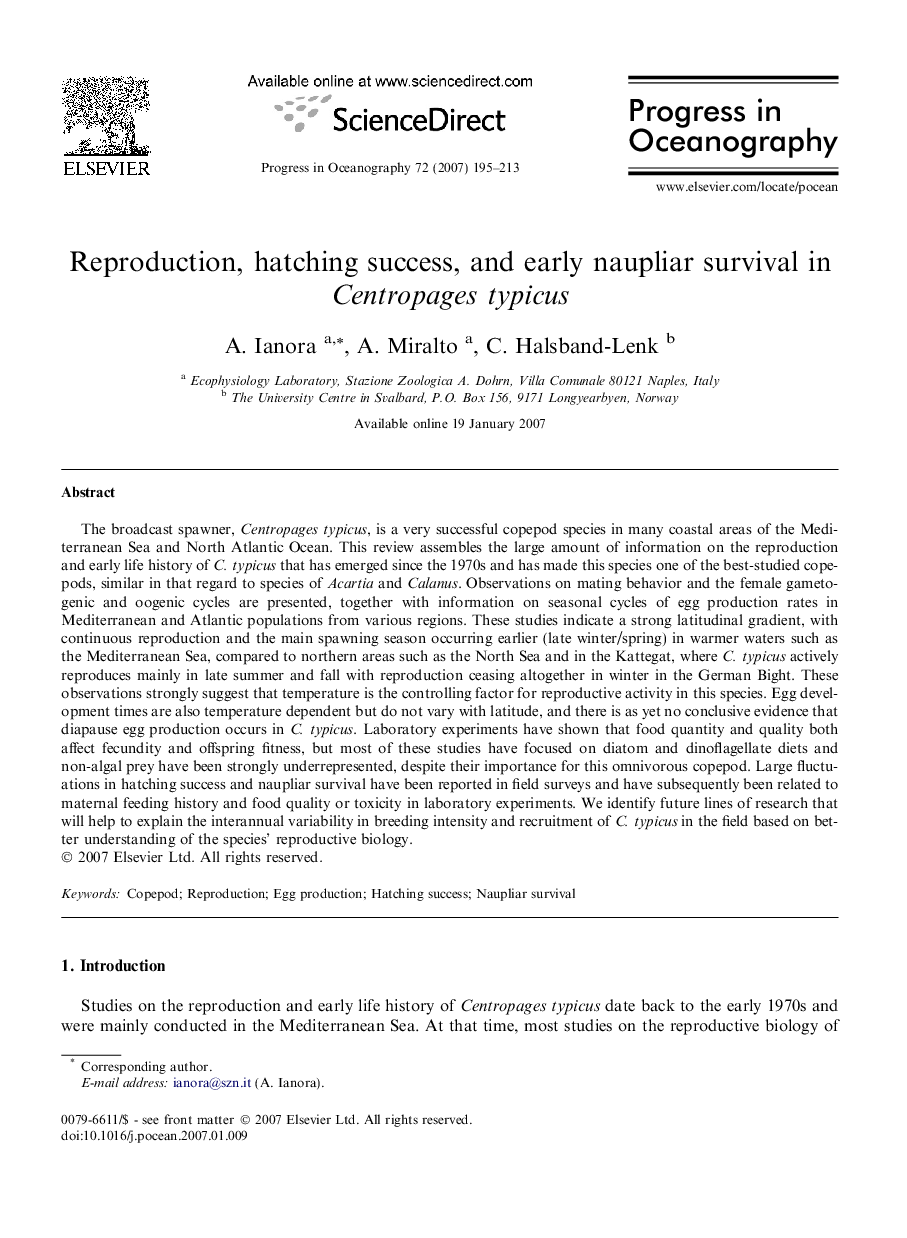| Article ID | Journal | Published Year | Pages | File Type |
|---|---|---|---|---|
| 4553828 | Progress in Oceanography | 2007 | 19 Pages |
The broadcast spawner, Centropages typicus, is a very successful copepod species in many coastal areas of the Mediterranean Sea and North Atlantic Ocean. This review assembles the large amount of information on the reproduction and early life history of C. typicus that has emerged since the 1970s and has made this species one of the best-studied copepods, similar in that regard to species of Acartia and Calanus. Observations on mating behavior and the female gametogenic and oogenic cycles are presented, together with information on seasonal cycles of egg production rates in Mediterranean and Atlantic populations from various regions. These studies indicate a strong latitudinal gradient, with continuous reproduction and the main spawning season occurring earlier (late winter/spring) in warmer waters such as the Mediterranean Sea, compared to northern areas such as the North Sea and in the Kattegat, where C. typicus actively reproduces mainly in late summer and fall with reproduction ceasing altogether in winter in the German Bight. These observations strongly suggest that temperature is the controlling factor for reproductive activity in this species. Egg development times are also temperature dependent but do not vary with latitude, and there is as yet no conclusive evidence that diapause egg production occurs in C. typicus. Laboratory experiments have shown that food quantity and quality both affect fecundity and offspring fitness, but most of these studies have focused on diatom and dinoflagellate diets and non-algal prey have been strongly underrepresented, despite their importance for this omnivorous copepod. Large fluctuations in hatching success and naupliar survival have been reported in field surveys and have subsequently been related to maternal feeding history and food quality or toxicity in laboratory experiments. We identify future lines of research that will help to explain the interannual variability in breeding intensity and recruitment of C. typicus in the field based on better understanding of the species’ reproductive biology.
